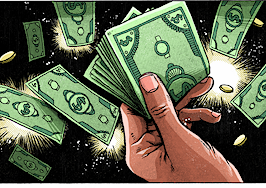Rising home prices, student loan debt and changed expectations from the millennial generation are causing buyers to veer away from the traditional model of homeownership and toward the shared equity model.
Shared equity as a new norm
“Shared equity is a term of new companies and models that are challenging what has always been considered a truth — that you either own or you rent,” Fabrizio Tiso, from Irene Retirement, said.
Traditional models are based on the idea that a couple — usually married or in a relationship — purchase a property under a shared title, putting up a deposit of 20 percent and paying down the mortgage with a financial institution until the property is owned outright.
But new shared equity models introduce many variations, allowing for smaller — or no — down payment, co-ownership among friends and even options where the goal is to own or trade a proportion of the property with a third party, such as a builder or specialized investment institution.
“The 30-year mortgage as an instrument of homeownership was developed out of the Great Depression,” Sahil Gupta, from Patch Homes, said. “In most industries, people have the choice of using debt or equity based on the cost of capital. But in housing, this has not been an option until now.”
Inman Connect San Francisco 2018 brought together four new startups in the homeownership space that are rewriting traditional models and creating what’s now being known as the shared equity economy.
Here’s a summary of those new models:
Alternative homeownership models
1. Pre-sell your home to fund retirement
Irene Retirement is a new take on the old reverse mortgage concept but based on equity. It allows elderly homeowners to sell their home and continue to live in it or receive income from rent.
Retirees sell their home to Irene, get cash upfront and never pay property taxes, homeowners insurance or big-ticket maintenance costs again.
2. Just own a bit
Let’s say a house costs $100,000. You have a great job and can pay a mortgage (let’s face it, it’s cheaper than rent), but you’re struggling to pull together the down payment.
Unison Home Ownership Investments solves this problem by providing you with half the down payment ($10,000 in our example), but this money is not a loan, it is an investment with the outcome being that Unison owns one-tenth of the property.
When the time comes to sell, and you achieve a price of $120,000, you will pocket $108,000, and Unison will receive $12,000 for its share. Equally, if the price goes down, Unison will bear its share of the loss.
3. Converting equity to cash
Like Unison, Patch Homes is a finance company that shares a portion of the property’s ownership and shares in the future appreciation or depreciation of the home’s value.
Imagine you own a home (or are paying it off) and want to renovate the kitchen. Rather than increasing your loan amount — and monthly repayments — Patch Homes gives you the option to sell off a portion of your home’s equity with Patch recouping its money when you decide to sell.
4. Rent until you buy
You’re a well-paid millennial (with student loans) who can afford to rent but can’t scrape together a down payment for a home. With Divvy, you find the home you want to buy, lease it from Divvy and every monthly rental payment builds up your home equity.
Divvy claims that if you rent for three years through it, you get a 10 percent deposit.
Kylie Davis is the CEO of Real Content based in Sydney, Australia. She was a speaker on robots and automation at Inman Connect San Francisco 2018. Connect with her on Facebook and LinkedIn.













